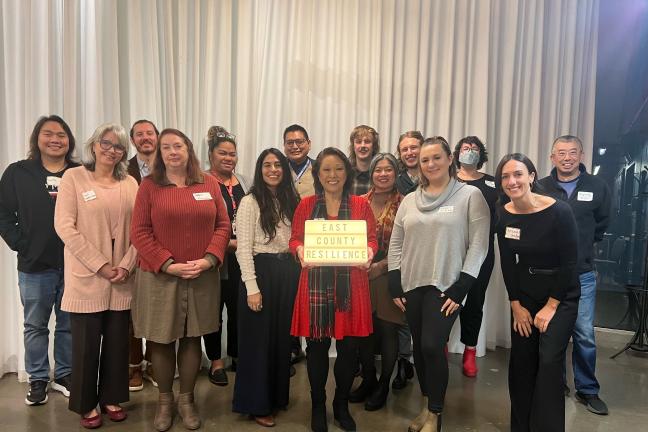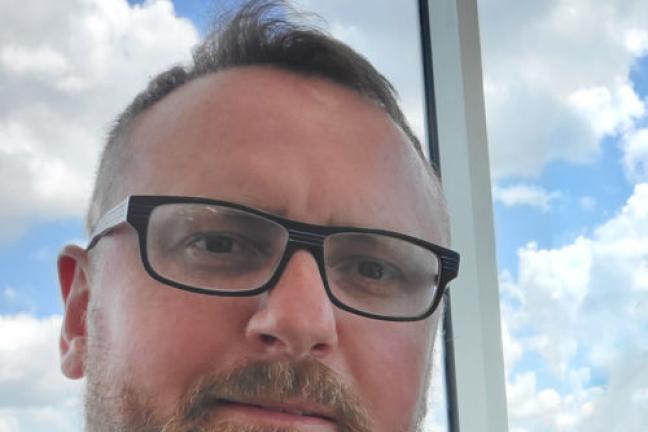In East Multnomah County, there are a variety of systemic, communication and infrastructural challenges that make communities highly vulnerable. To address this and help prepare for future crisis events, our office led a process to develop a framework for a Community Resilience Initiative. This included a series of workshops with twelve East County-based organizations.
Those included:
- Rockwood CDD
- Micro Enterprise Services of OR
- Immigrant and Refugee Community Organization
- Latino NetworkRahab's Sisters
- Yasuke Pharms
- Slavic Community Center
- OR Chinese Coalition, and Unite Oregon
- As well as, representatives from Multnomah County’s Bienestar de la Familia, Office of Sustainability, Office of Emergency Management, and the City of Gresham.
The focus of these workshops was to discuss how to expand community resilience, identify issues facing East County, and determine what makes communities resilient in the face of hazardous events and in the absence of one.
Throughout the workshop series, the participants defined resilience and equity, shared their experiences living and working in East Multnomah County, provided context to issues faced by communities and organizations and created metrics to measure the success of the resilience framework. The participants discussed potential pathways to increase community resilience, some of which included the creation of a Community Resilience Network made up of the Community Cohort and various County departments that participated in the workshops; as well as recommendations for the creation of a physical resilience hub located in East County; the use of non-extractive community engagement models; an illustrative story map that depicts needs, barriers, and a strategy for addressing gaps; and a service delivery software pilot developed by Forward and the Community Cohort to increase accessibility to vital resources.
The results of those conversations were broken down into three pillars that impact community resilience: socially, digitally, and physically.
Social:
The social component of the project was informed by work with resilience groups in Hawaii who have had success in this area after the lava flow. We learned that a huge part of community resilience is building a network of aligned groups, creating a shared culture based on human and environmental well-being, and developing a robust communication system between local government, county and community organizations. The network we developed is called the East County Community Network and serves as a collaborative online space to share community events and distribute information and resources. Working with the Office of Sustainability we will host two Resilience Summits a year with our community member organizations where we provide engagement and learning opportunities.
Physical:
Resilience Hubs are defined as community-serving facilities augmented to support residents, coordinate communication, distribute resources and increase adaptive capacity while enhancing quality of life. They provide an opportunity to effectively work at the nexus of community resilience, emergency management, climate mitigation and social equity while providing opportunities for communities to become more self-determining, socially connected and successful before, during and after disruptions.
Our office has been exploring the concept of a resilience hub and working with community-based organizations to advance resilience concepts for the last two years as part of our Community Resilience Initiative. We continue to establish opportunities for community engagement and resilience-based learning with our East County Community Resilience Network and seek out opportunities to learn more about resilience hubs. We attended the Urban Sustainability Directors Network Work Session to learn more about how we can create resilience hubs here in our county. While leading the development and implementation of strategies to build climate resilience we are committed to seeking and advocating for state, federal, and other funding. Also, we are in the process of identifying and evaluating physical sites/mobile equipment to serve as and support resilience hubs in East County.
We are working with the Office of Sustainability to develop a strategy to acquire or retrofit a county-owned physical space to create a resilience hub that can serve the diverse needs of community members before, during, & after crisis events. Ideally, this includes providing shelter, in-person services, and a community gathering space in a location that is seismically sound and equipped with the necessary resources.
Check out the resources below from the Urban Sustainability Directors Network Resilience to learn more about resilience hubs:
Digital:
Our goal was to create a Common Application using a platform called Forward to increase accessibility to services by acting as a one-stop for county departments and community-based organizations to post their services and programs for community members. Through the Common Application, an individual can apply for services and resources via a singular application on one website versus multiple applications on numerous websites. Working with community-based organizations and Forward we ran a pilot of this application. The learnings from that work are being used to expand the pilot county-wide. More details about the programs included can be found here.
As a result of our work and advocacy with our East County Resilience Network the role of Strategic Initiatives Manager, Theo Latiolais, in the Chief Operating Officer’s office, was brought on in September to advance the Common Application Project countywide. Common Application 2.0 will go live in the first quarter of 2024 with expanded services, a call center, improved accessibility, search engine optimization, and mobile-friendliness. We are working on expanding the current services and including 20 different programs based on need and functionality and putting together an outreach plan to improve the visibility of the application to the general public. Longer term we are integrating the learnings from this process into part of the County’s Digital Transformation. As a result of our Common Application pilot, we hope to see end-to-end process improvements and eventually digitize county services fully.

